Jurassic World: Indominus Rex has the most powerful quest
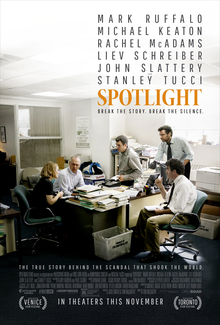
-
Est. vs Actual domestic box office revenue
$559-647MM/ $652MM - Five mythological tales reveal the invisible plot structure
Jurassic World, the fourth installment in the franchise, is considered the best sequel. The movie uses the basic human desire of tranquillity much like other installments. Though the differentiator is the explorations of other human desires such as vengeance, family and power. Mythosis uses 5 mythological tales to extract the plot structure of the movie.
1. Mythological tales reveal the invisible plot structure of any story
1A. 96% of the events are borrowed from 5 mythological tales
Owen’s quest is driven by the desire to be in secure surroundings and mirrors the tale of Odysseus from Greek mythology, Both Odysseus & Owen navigate their way out of inhospitable territory.
Masrani’s quest is driven by the unfulfilled desire to protect loved ones and mirrors the tale of Oedipus from Greek mythology. Both Oedipus and Masrani unintentionally put their loved ones in harm’s way and regret their decision.
Every human desire has 2 quests, fulfilled and unfulfilled. Jurassic World uses both the universal quests for the basic human desire of protecting loved ones.
Claire’s quest is driven by the fulfilled desire to protect loved ones and mirrors the tale of Demeter from Greek mythology. Both Demeter & Claire embark on a journey to recover their lost loved ones.
Indominus’ quest is driven by the desire to punish offenders and mirrors the tale of Duryodhan from Hindu mythology. Both Duryodhan & Indominus attempt to reclaim their kingdom.
Hoskins’ quest is driven by the desire to dominate others and mirrors the tale of Ravan from Hindu mythology. Both Ravan & Hoskins need for domination leads to their downfall.
Kids have an underdeveloped quest of independence.
Detailed mirroring of each character to their respective mythological tales is in section “Unlocking the Ideal Plot Structure”
Masrani’s quest is driven by the unfulfilled desire to protect loved ones and mirrors the tale of Oedipus from Greek mythology. Both Oedipus and Masrani unintentionally put their loved ones in harm’s way and regret their decision.
Every human desire has 2 quests, fulfilled and unfulfilled. Jurassic World uses both the universal quests for the basic human desire of protecting loved ones.
Claire’s quest is driven by the fulfilled desire to protect loved ones and mirrors the tale of Demeter from Greek mythology. Both Demeter & Claire embark on a journey to recover their lost loved ones.
Indominus’ quest is driven by the desire to punish offenders and mirrors the tale of Duryodhan from Hindu mythology. Both Duryodhan & Indominus attempt to reclaim their kingdom.
Hoskins’ quest is driven by the desire to dominate others and mirrors the tale of Ravan from Hindu mythology. Both Ravan & Hoskins need for domination leads to their downfall.
Kids have an underdeveloped quest of independence.
Detailed mirroring of each character to their respective mythological tales is in section “Unlocking the Ideal Plot Structure”
1B. 32 mythological tales are the source of all stories, even the untold ones
Human beings are driven by 16 fundamental desires. Every desire, whether encountering fulfilment or unfulfillment, gives rise to two distinct quests. Thus, a spectrum of 32 unique quests mirrors every human desire.
We have discovered mythological tales from across civilizations that uniquely portray each one of these 32 human quests. While each mythological tale stands as a distinct quest, the true magic unfolds when these tales are combined. This synergy is evident in the epics of Odyssey and Ramayan, where various universal quests seamlessly intertwine.
Combining any five tales from the 32, generates a staggering 24 million unique story plots. Take it a step further, by combining six tales the possibilities explode to an astounding 600 million!
Jurassic World’s unique plot structure is #6,161,258 since the script interweaves the tales of Oedipus, Demeter, Duryodhan, Odysseus & Ravan.
We have discovered mythological tales from across civilizations that uniquely portray each one of these 32 human quests. While each mythological tale stands as a distinct quest, the true magic unfolds when these tales are combined. This synergy is evident in the epics of Odyssey and Ramayan, where various universal quests seamlessly intertwine.
Combining any five tales from the 32, generates a staggering 24 million unique story plots. Take it a step further, by combining six tales the possibilities explode to an astounding 600 million!
Jurassic World’s unique plot structure is #6,161,258 since the script interweaves the tales of Oedipus, Demeter, Duryodhan, Odysseus & Ravan.
2. Plot structure potential of Jurassic World: $559-647MM
2A. Plot structure evaluation
An analysis of Blockbuster, Hit & Flop plots has led to the discovery of Mythosis Code. The Code reveals the story principles shared by all Blockbusters. We use the Code to estimate a story’s potential.
- All Blockbusters have at least 3 universal quests. Jurassic World uses 5 universal quests of Vengeance, Tranquillity, Family & Power. Both quests of Family is used.
- In Blockbusters, each universal quest is mirrored by ONLY ONE character. Masrani mirrors the unfulfilled quest of Family. Indominus mirrors the universal quest of Vengeance & Owen mirrors the quest of Tranquillity. Claire mirrors the fulfilled quest of Family whereas Hoskins mirrors the quest of Power.
- Every Blockbuster character borrows at least 35% of the universal quest. Indominus borrows 44% events from the quest of Vengeance. Owen borrows 40% from the quest of Tranquillity whereas Claire borrows 38% from the fulfilled quest of Family. Masrani borrows 27% & Hoskins 10% from their respective quests.
- Blockbusters interweave different quests to create a tight plot structure. Interweaving occurs when events of 2 quests occur simultaneously in the story. Blockbusters have a quest interweaving threshold of 0.5. Jurassic World has a quest interweaving score of 0.60 and is above par. An example of interweaving the quests of Owen & Hoskins:

2B. Estimating revenue potential of plot structure
Jurassic World's plot structure adheres to the principles of storytelling
We have created an algorithm by assigning weights to the principles of The Mythosis Code. The algorithm calculates the potency of a story’s plot structure and estimates its corresponding audience appeal. Blockbuster plot structures have a score of at least 0.64 and appeal to 20% of the audiences.
Spotlight’s script score is 0.68 and the movie will appeal to 19.58–23.93% of the population. Our estimate of the movie’s revenues from its audience appeal is $559 – 647MM in the domestic market. The movie’s actual revenue was $652MM.
We have created an algorithm by assigning weights to the principles of The Mythosis Code. The algorithm calculates the potency of a story’s plot structure and estimates its corresponding audience appeal. Blockbuster plot structures have a score of at least 0.64 and appeal to 20% of the audiences.
Spotlight’s script score is 0.68 and the movie will appeal to 19.58–23.93% of the population. Our estimate of the movie’s revenues from its audience appeal is $559 – 647MM in the domestic market. The movie’s actual revenue was $652MM.
3. The ideal plot structure of Jurassic World
We have identified 32 universal quests that represent every human desire. These quests are the superset of thousands of stories across cultures that reflect our collective subconscious. Each quest has a structured sequence of events divided into 5 major arcs.
We map a character’s quest to the relevant mythological tale (universal quest) which reveals the gaps in their quest, if any. The ideal Plot Structure is constructed by plugging these gaps with the missing events from the tale. These events strengthen both the journey of characters as well as the weaving of quests without altering the story.
We map a character’s quest to the relevant mythological tale (universal quest) which reveals the gaps in their quest, if any. The ideal Plot Structure is constructed by plugging these gaps with the missing events from the tale. These events strengthen both the journey of characters as well as the weaving of quests without altering the story.
3A. Quest of characters and their mythological counterparts
Quest 1: Owen mirrors the universal quest for Tranquillity
Owen’s desire for Tranquillity stems from the need to be in secure surroundings. The tale of Odysseus from Greek mythology is the universal quest for Tranquillity.
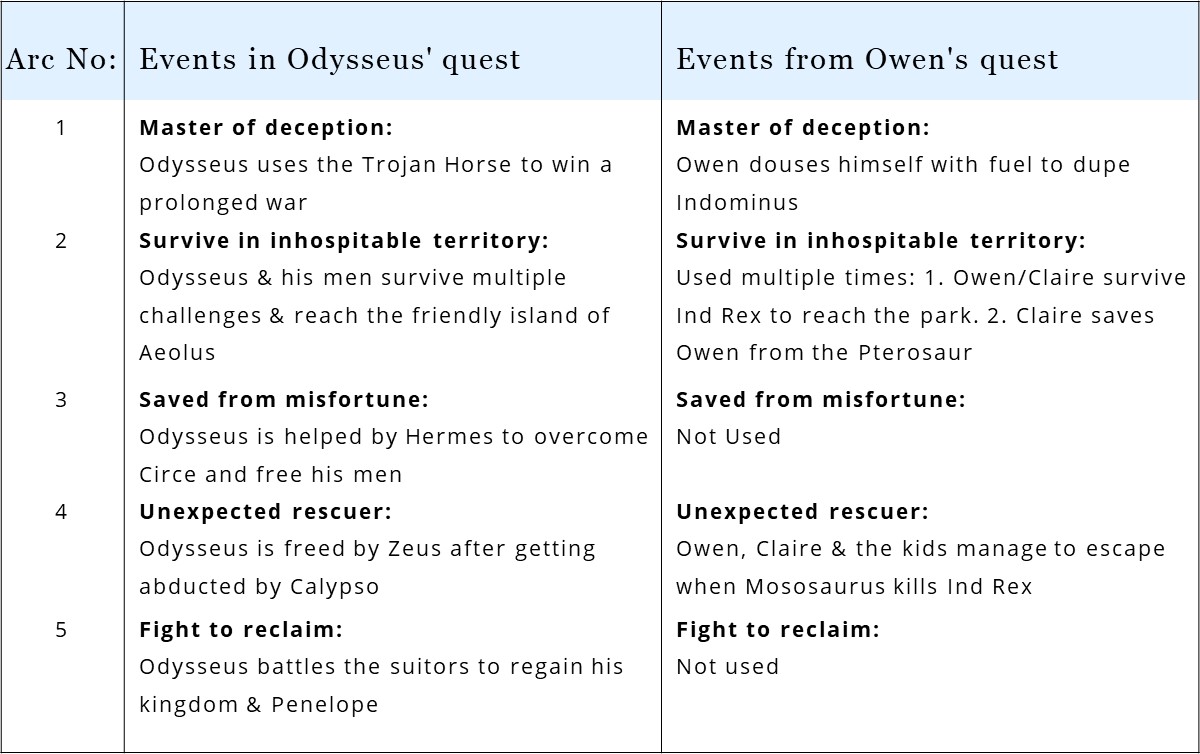
Quest 2: Masrani mirrors the universal unfulfilled quest for Family
Masrani’s desire for Family stems from the need to protect loved ones. The tale of Oedipus from Greek mythology is the universal unfulfilled quest for Family.
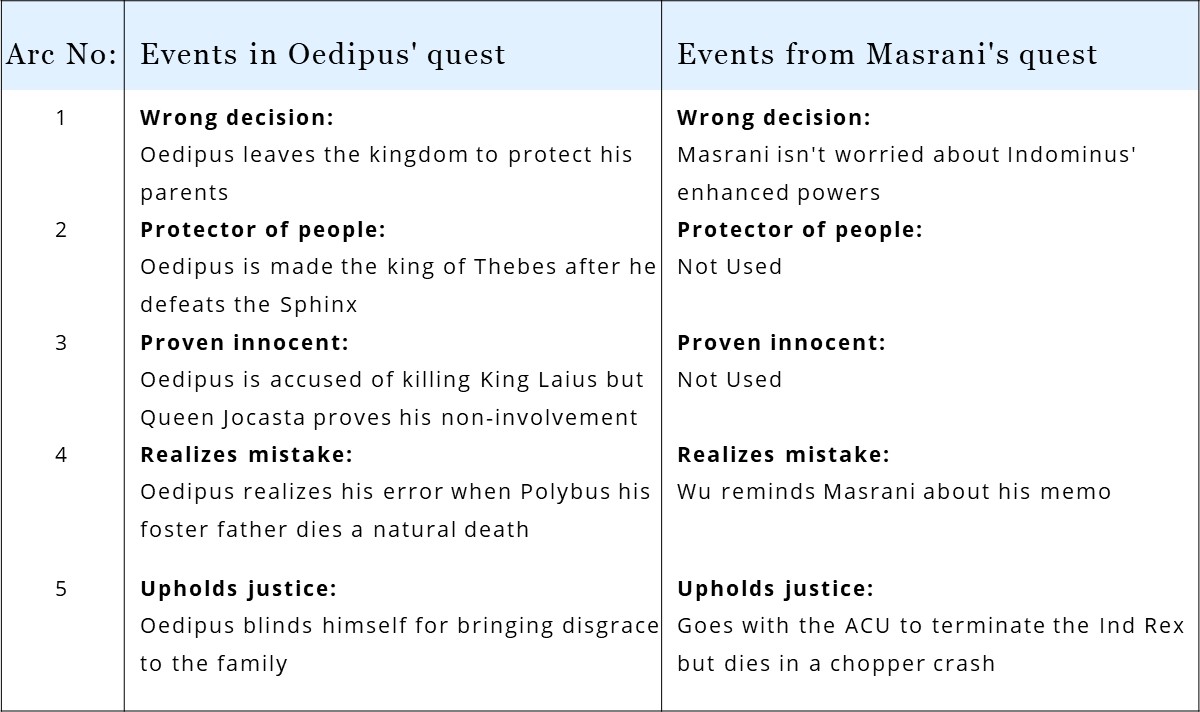
Quest 3: Indominus mirrors the universal quest for Vengeance
Indominus’ desire for Vengeance stems from the need to punish offenders. The tale of Duryodhan from Hindu mythology is the universal quest for Vengeance.
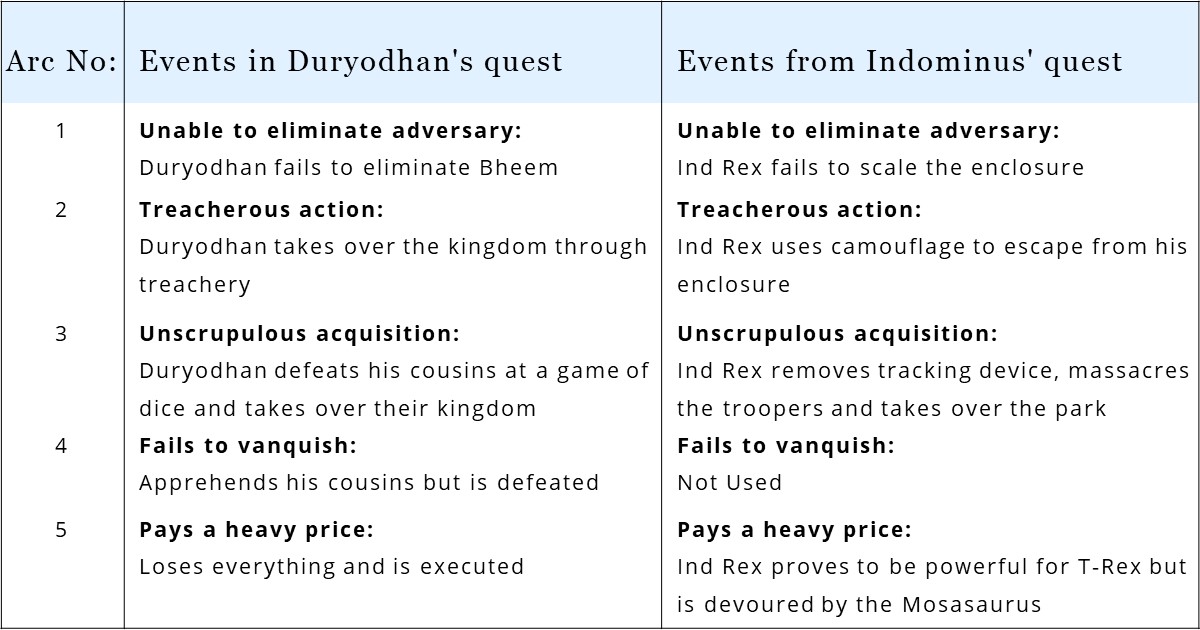
Quest 4: Claire mirrors the universal fulfilled quest for Family
Claire’s desire for Family stems from the need to nurture & protect. The tale of Demeter from Greek mythology is the universal fulfilled quest for Family.
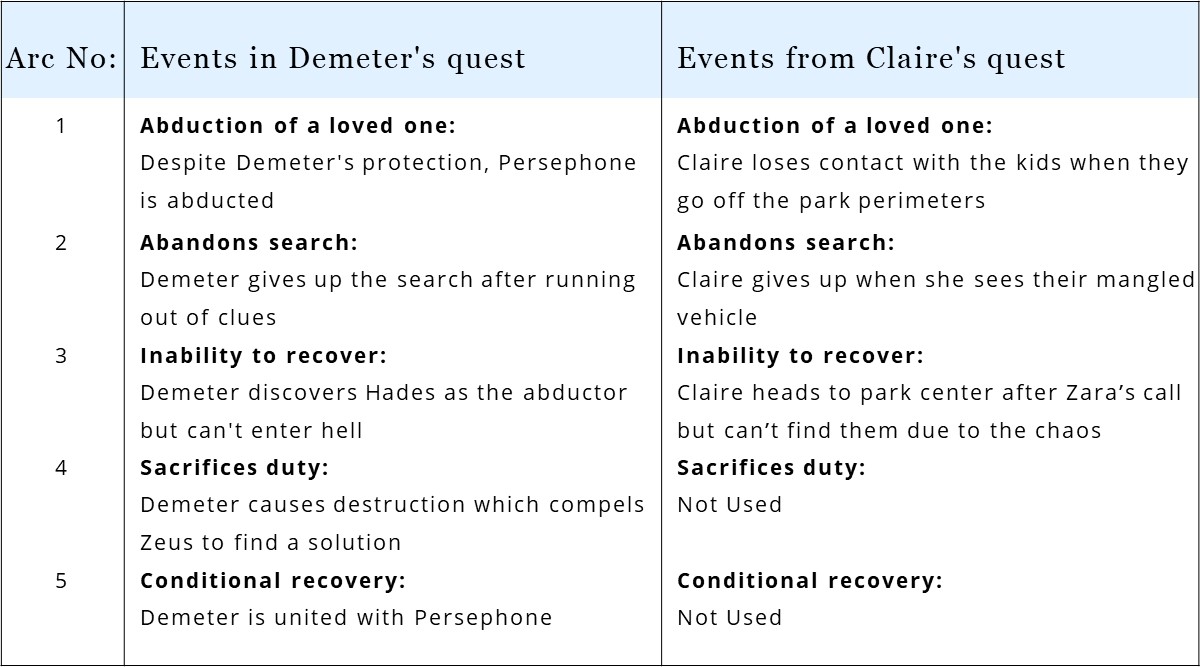
Quest 5: Hoskins mirrors the universal quest for Power
Hoskins’ desire for Power stems from the need to dominate others. The tale of Ravan from Hindu mythology is the universal quest for Power.
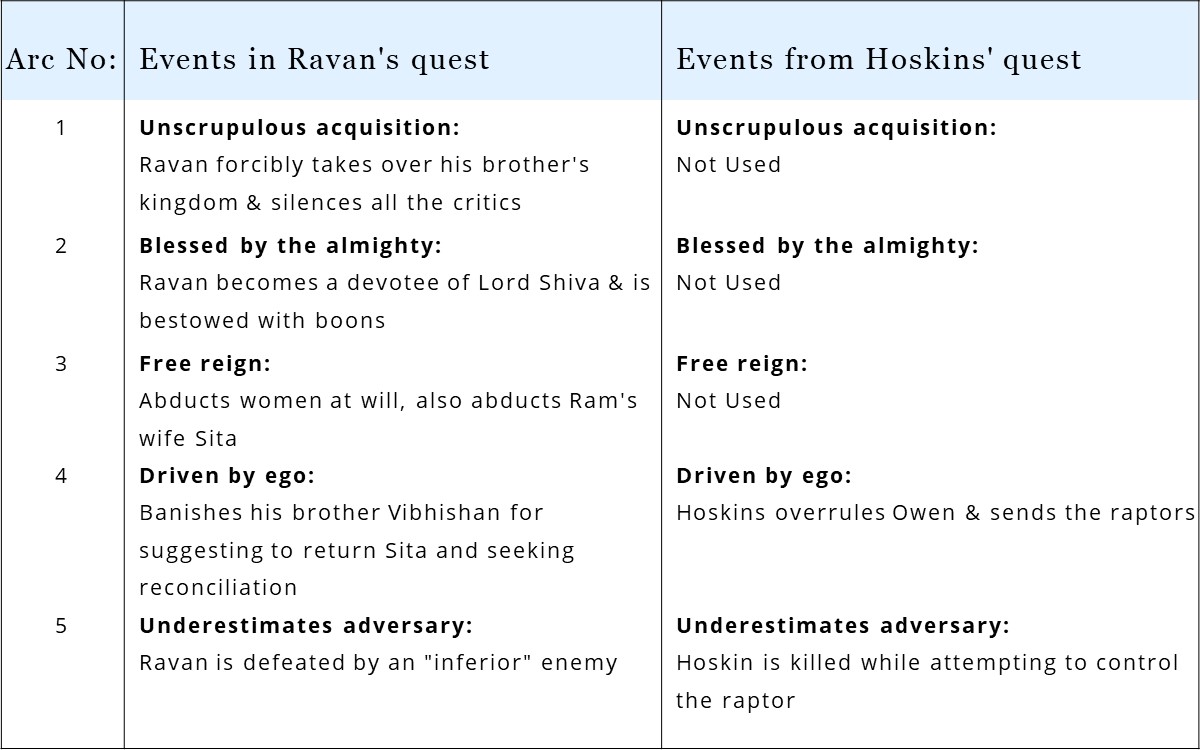
- Tags: 2015, Accumulation, Amblin Entertainment, Circe, Colin Trevorrow, Demeter, Family, Kans, Legendary Pictures, Odysseus, Power, Prediction, Preservation, Ravan, The Kennedy/Marshall, Tranquillity, Universal Pictures
